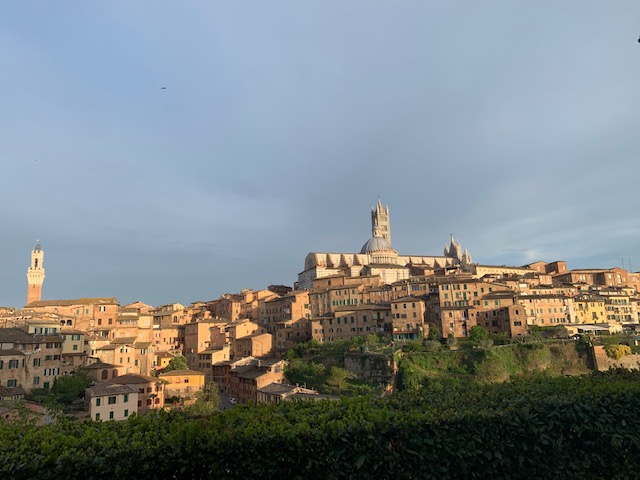“I cried,” said Federico.
Federico was covered in dust, and he was telling us about the last climb of the day at the Nova Eroica.
We were on the train from Buonconvento to Siena, having ridden the Nova Eroica earlier in the day. This event is a relatively new one in the Eroica family, which is known for long, difficult rides on pre-1986 bikes. Starting in Tuscany, the Eroica now has events throughout Europe, the US, Japan, and is adding more all the time. Besides creating an empire of fondos for MAMILs with old kit gathering dust, the Eroica has spawned a pro race, Strade Bianche.
Unlike the Eroica, the Nova version allows you to ride whatever bike you please, and I have 1), no interest in riding a 39/25 up steep Tuscan roads, and 2) my Old Bike is too young. So, I ponied up my 50 bucks and decided this was as good an excuse as any to ride in the area surrounding Siena. I reasoned that my modern gravel bike, with low gearing and giant tires would be the perfect machine for the challenge of the Nova Eroica. It turned out I was correct-ish.
I flew to Rome (FCO), then took the train to the bus terminal, where I connected to Siena. This was about an hour faster than the train, as the bus takes a more direct route, but is of course, dependent on the whims of Italian traffic.
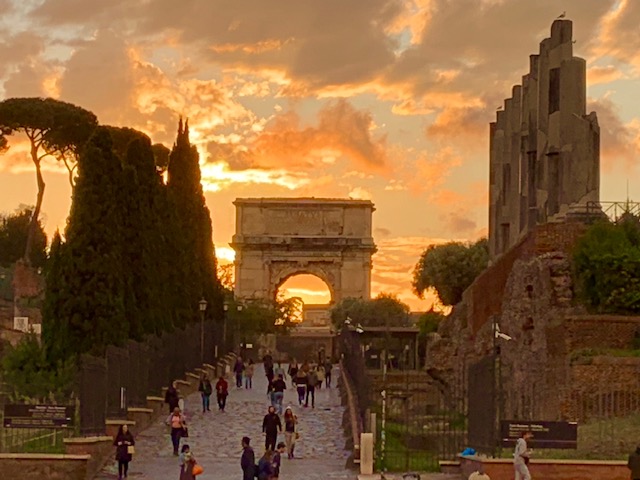
From the train station (and bus stop) in Siena, I walked about a kilometer to my wonderful AirBNB. It was a Wednesday afternoon in late April, and the streets of the ancient city were packed with tourists meandering down the narrow passages. I dropped off my stuff and headed out into the late afternoon air for food and a beer, and a chance to walk around and check out the city.
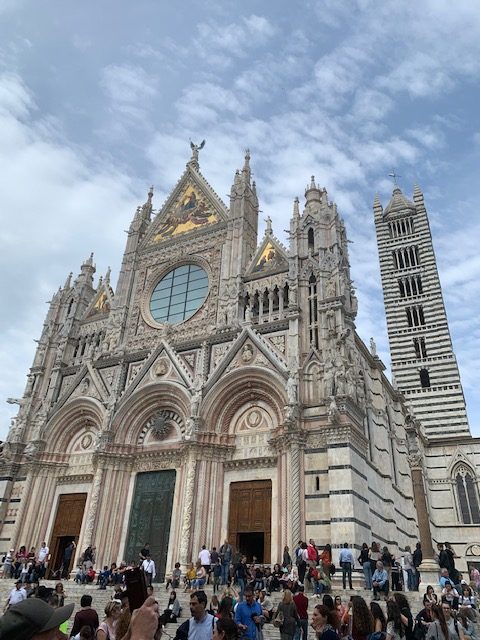
Siena is the start and finish of the Strade Bianche race, a UCI World Tour pro cycling race based on the Eroica. The Eroica had its origins about 20 years ago as some locals made an effort to save local farm roads from being paved, clearly with Paris-Roubaix in mind as their model. The Eroica was a smashing success, and Strade Bianche, despite being quite young (it started in 2007), has become a Spring Classic in all but title.
Siena’s famous town square is beautiful, and quite bowl-shaped. Watching the race on TV, there’s no sense of how much curve there is to the whole space. It pulls you inwards towards the center, past the ridiculously over-priced restaurants, past the fountain, to the base of the tower. It’s beautiful, as only an Italian tourist trap can be. Take pictures, soak up the view and the history, then walk about 3 blocks, where the price of food and drink drops by nearly 50%.
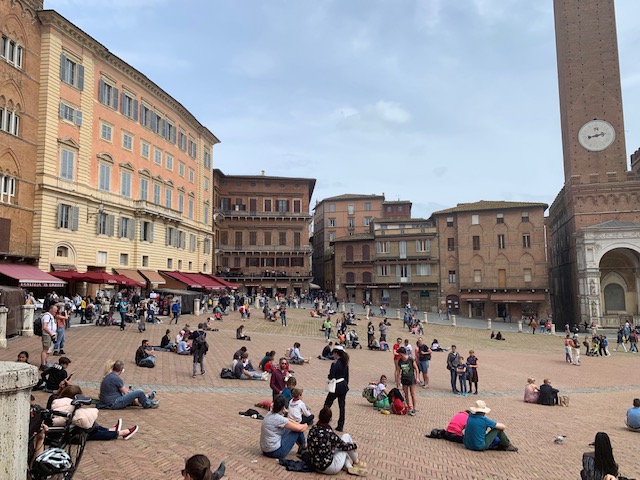
There are a wide variety of rides that loop outwards from Siena, and I tried several of them. As the Nova Eroica route is generally south and east of the city, I rode to the southwest, north, and northeast.
The first loop I rode headed westward, then south, before looping to the east of the city. It covered multiple Strade Bianche sectors. The route is pretty easy to find by searching for .gpx files (or drop me an email and I can send them).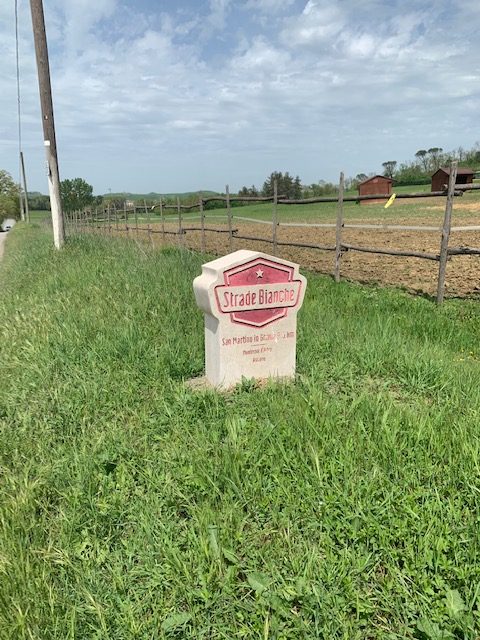
It’s pretty easy to get out of Siena and onto smaller, less crowded roads, although I think Girona is easier. Along the way, I learned the 3 Basic Rules of Italian Locomotion:
1- Go where you want, when you want, how you want. Everyone else will deal with whatever you do. I saw people dive directly into crosswalks in Rome; watched a man walk off the end of the sidewalk and down the middle of a road; saw cars zing in all directions; watched garbage trucks moving straight down pedestrian-packed streets, parting the sea of tourists like some sort of pungent, motorized Moses.
2- Straight lines are a concept covered and abandoned in middle-school geometry class. At no point did I witness any travel, at any point, by any person, using any method (vehicle, bicycle, foot) travel in a straight, predictable manner when presented with a clear and open pathway. This may be a subset of Rule 1.
3- Do not tailgate if you can draft. I watched a very nice Audi follow a delivery truck at about 50MPH with less than 18″ between them. At first I thought the Audi was being towed. After seeing this, I noticed it time and again, between vehicles of all types.
While I expected to see endless rolling vinyards, the route led me more through wheat fields and on occasionally very crowded roads. The Strade Bianche sectors were occasionally marked, and were almost always perilously steep. I’ve ridden some Roubaix cobbled sectors, and there is no comparison between the signatures of the two races. Both are brutal in their own way, and I can’t imagine racing either. I’ll stick to my mamilian pace (slow).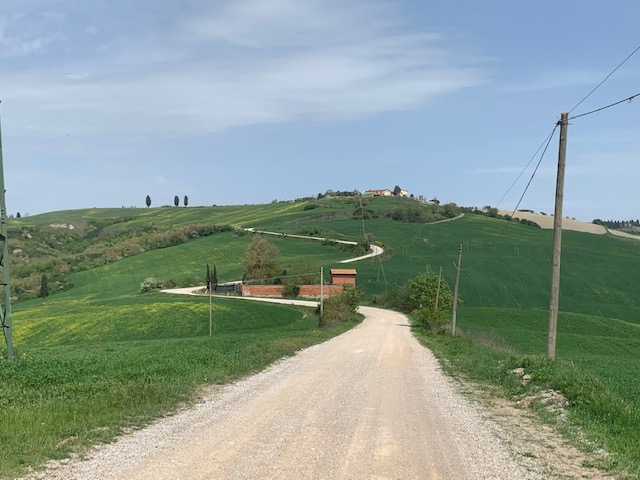
Day two’s route was dramatically different, heading northward to Gaiole in Chianti (the start of the Eroica route). This loop took me through beautiful valleys and challenging climbs to a ridgeline which headed westward and offered expansive views over vineyards and rolling hills.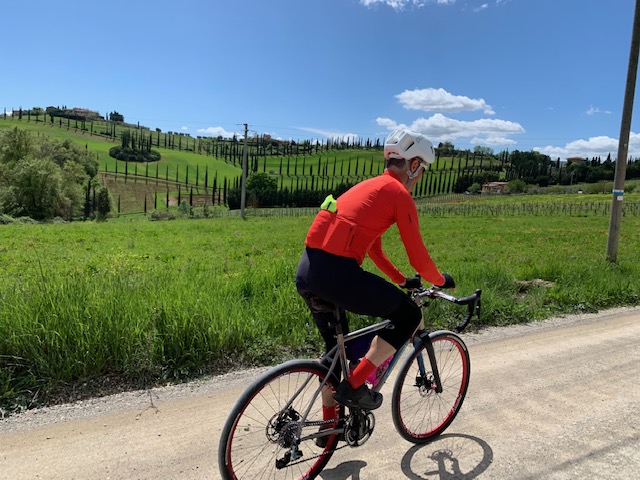
It was dramatically different than the southern loop, in road surfaces, microclimes, agriculture, and character. It seemed to fit the tourist brochure a bit better. A flowing, fast descent off the ridgeline was an ample reward for the challenging climb, and it was becoming clear that riding in this region involves many short, steep climbs, with totals well in excess of 100’/mile.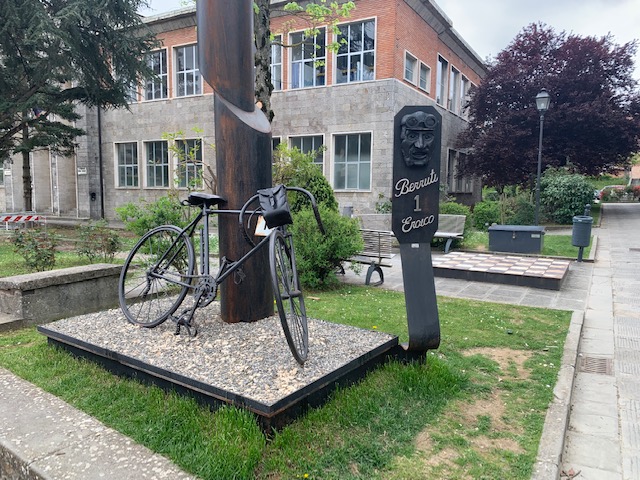
I made it back to Siena in time to meet my friend Haze, who had decide to join the adventure. A scant 10 minutes after I got back to the apartment, he rounded the corner, bike case in tow. We unpacked the bike, and discovered that the tubeless tires were completely unseated from the rims, so we headed into town to find a bike shop for help.
We didn’t find a shop, discovering instead a time capsule. It was remarkable, with antique derailleurs on display, floor-to-ceiling cubbies behind the counter stuffed with God-knows-what, and a backshop complete with a 1946 frame and wooden rims on display. We followed the shop owner into the back room, where he tried (unsuccessfully) to seat the tires with his air compressor. I noticed he was not using a Presta inflator head, instead, his compressor tip was a standard spray nozzle, much like I use for blowing dust off my tablesaw. He simply jammed it against the valve and let fly. After a few minutes of unsuccessful air spritzing, he shrugged and went to find tubes. Another fellow appeared from the dark labrinth of the shop, and without a word, put the tubes in and handed the wheelset back to us.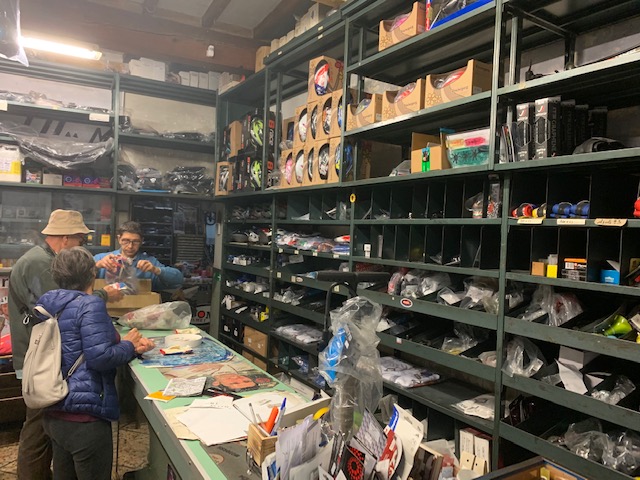
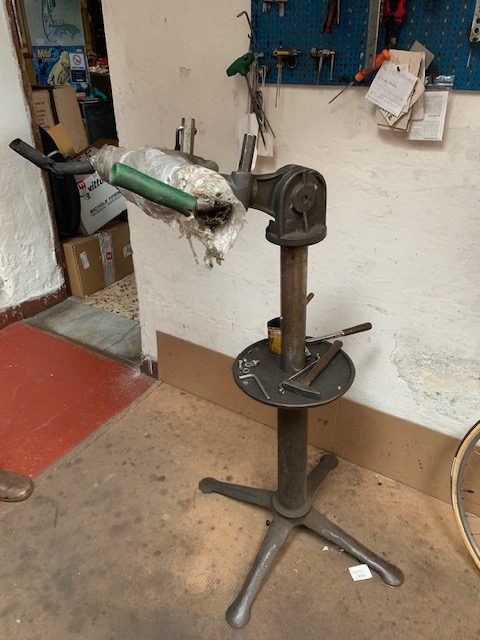 It was then time to re-explore Siena, and we found many beers, quite a bit of wine, and a large meal before heading back to the apartment. Siena’s many small, twisting streets hold a wide variety of small restaurants and excellent, reasonable food, provided you are not too close to the main square. It’s worth the effort to explore.
It was then time to re-explore Siena, and we found many beers, quite a bit of wine, and a large meal before heading back to the apartment. Siena’s many small, twisting streets hold a wide variety of small restaurants and excellent, reasonable food, provided you are not too close to the main square. It’s worth the effort to explore.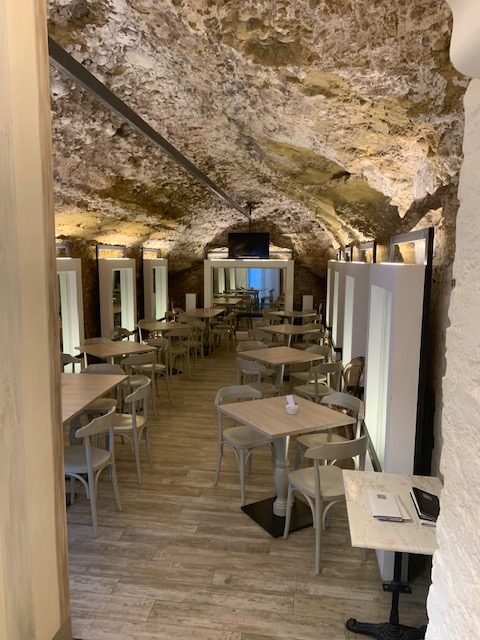
The morning of the Nova Eroica dawned cool and cold, and Haze and I decided the best way to Buonconvento was to take a taxi. The driver navigated the crazy web of one-way streets in Siena with aplomb, and delivered us to Buonconvento is less than half an hour. We checked in, pinned on numbers, then got a quick espresso and snack before the 8:00 rollout. 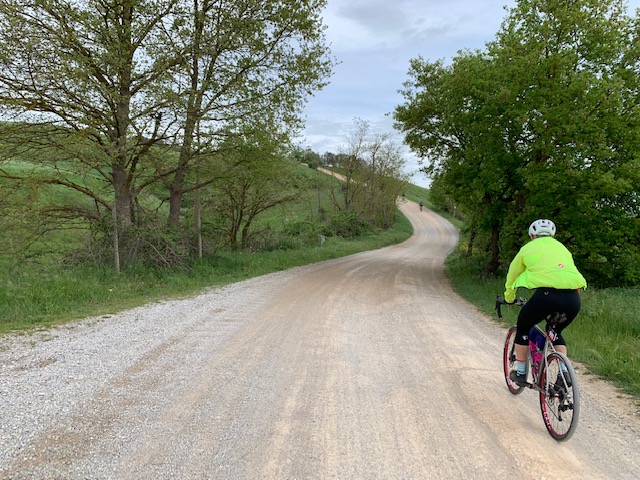
The route was counter-clockwise, and started climbing within a kilometer or two. The climb was welcome, as it helped fight the morning chill, and as we rode along, we saw quite a few Eroica-grade bikes, complete with their riders in proper garb. The familiar pattern of steep climb, steep descent, views filled with vibrant green fields I had seen all week was back, and though the descents were brisk, the day was proving to have a nearly perfect temperature for cycling.
At the first food stop, we stuffed ourselves with delicious bread, cheese, crackers, and salami. Judging by the thin crowd, we were well behind the main group, but as we had not bothered picking up timer chips, we didn’t care. A guy rolled up to the drink table, and straddling the top tube of his bike, duck-walked up to refill his bottle. He completely blocked the table, from one end to the other. I was surprised, because this guy is at every fondo I’ve ever ridden. I assume it’s just one guy, because I don’t figure that there’s that many selfish asshats out there who think it’s OK to block a whole table by themselves. At least, I hope most people have at least a modicum of consideration to their fellow fondo-ers.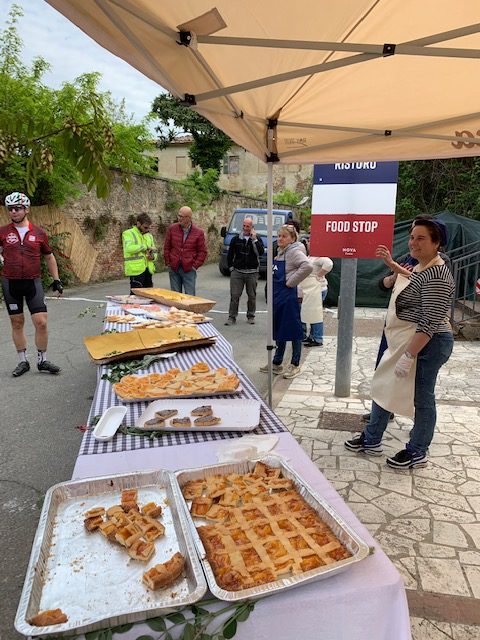
As the day, and route, rolled on, with hardly a flat spot in sight, we heard the shriek of metal-on-metal. It sounded like a pebble jammed in a car disc brake, but louder, and approaching us from behind. A man in a yellow Del Tongo jersey and riding an orange Ghiaroni smiled at us and said, “My brakes are acoustical, no?” Well, yes, as a matter of fact, they are.
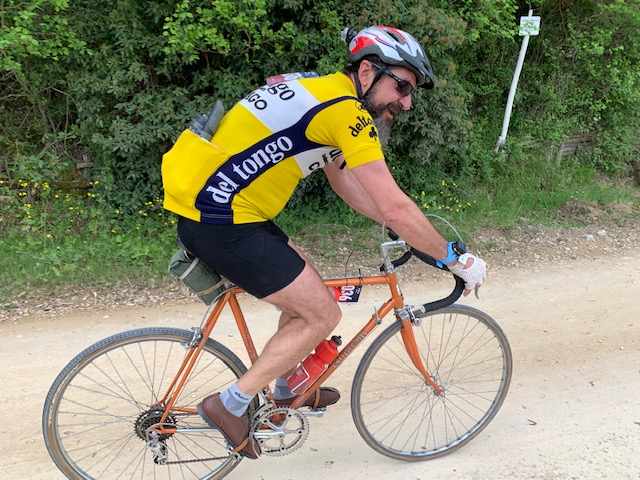
We chatted with him for a few kilometers, then lost contact with him on another Strade Bianche sector. As we looped southward towards Buonconvento, clouds began to thicken and threaten, before finally producing a brief, but intense, shower. I recognized our location from my ride a few days before, and I knew we were about 10 kilometers from the 60-mile cutoff, where we would have to decide if we were finishing the ride or continuing for 25 more miles.
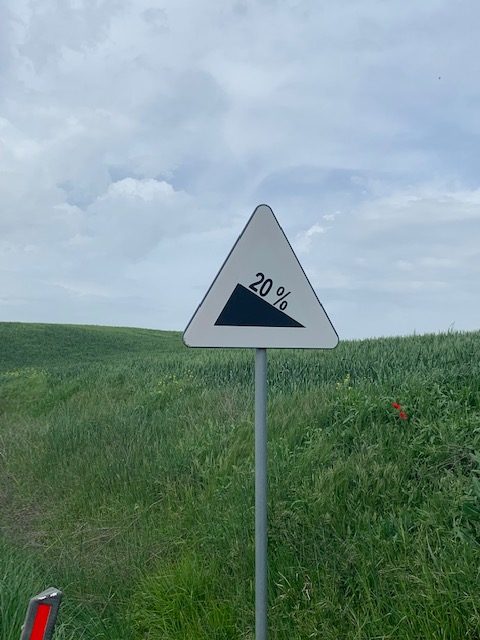
As we approached the turn, the inexorable pull of a cold beer (a force many times stronger, and harder to resist, than gravity), tugged our wheels to the left, and we coasted into Buonconvento, the finish line, spaghetti feed, and malted beverages.
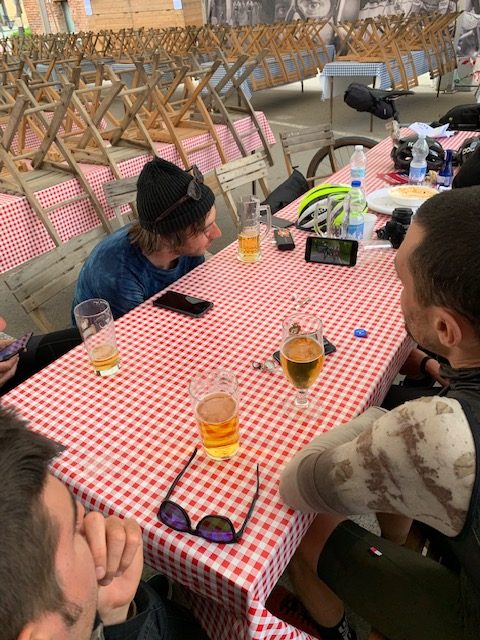
My bike performed well, and the 30/46-11/32 cassette combination gave me decently low gears for the steep Tuscan climbs. I rode 650b Panaracer Gravel King SK 48c tires, which I find to be a great gravel tire. They are slow on pavement, however, and this route (and the rides I did in the region) had plenty of pavement. The gravel road surface was comparable to Colorado road base, a mix of sand and gravel, fairly hardpacked. If wet, it can be a mess, but dry it was firm and didn’t have too many loose pebbles on top. I would have been fine with the file-tread Gravel Kings.

After a few frosty pints, some general loitering, and chatting with several people, including our acoustical friend, it was time to head to the train station.

We purchased our tickets, and just before the train arrived, Simon and Federico joined us on the platform. They were perhaps dustier than we were, and were clearly not as refreshed as us.
On board, with bikes standing neatly in the racks, we chatted about the day, and they told us about the last 25 miles. It not only included the steepest climb of the day, but several false summits, small ramps after the actual top, and a false-flat to the finish. It was not easy, and while we had cut off with about 6400′ of climbing, they did another 2000′. Federico said it was incredibly difficult, and he smiled sheepishly as he admitted to crying. Simon nodded, affirming the difficulty of the climb as well as the tears. They had clearly earned their beers, and a good night’s sleep.
As for us, maybe we didn’t earn our beers, or maybe we did, but in the end, they tasted great.
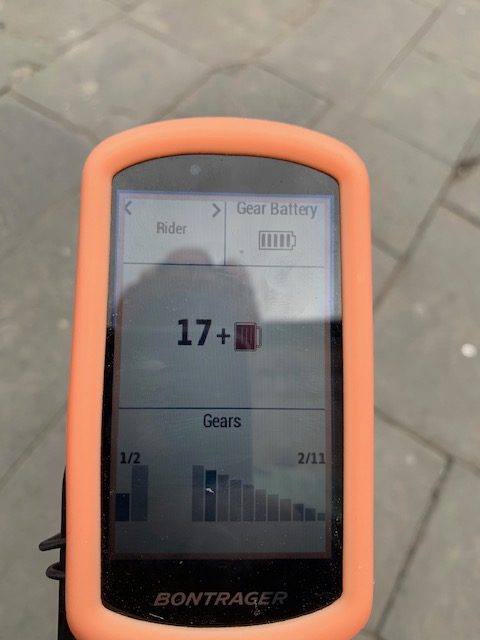
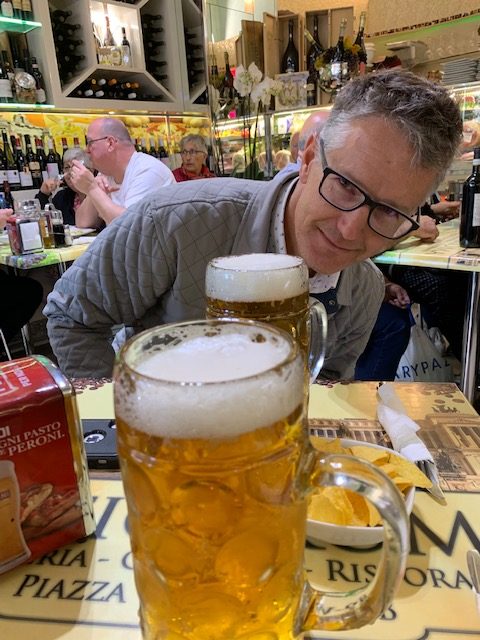
Logistics: We flew in and out of Rome (FCO). There are plenty of connections from the US. Leaving the airport is easy, with a train to Tiburtino station to connect to the bus running regularly. The train is about 40 minutes, then from the station to the bus station is a short walk under the elevated roadway. There are no signs. The bus depot is pretty easy, and the buses leave on time. Taking the train to Siena is another option, but it loops to Florence before swinging south to Siena, and is (on paper) an hour longer. I found the bus to be quite easy, affordable, and fast.
There are 2 bus stops- one in town and one next to Siena station. From the station, use the escalators in the mall to climb into the city; the in-town stop is a short walk to the center of the city on relatively flat roads.
